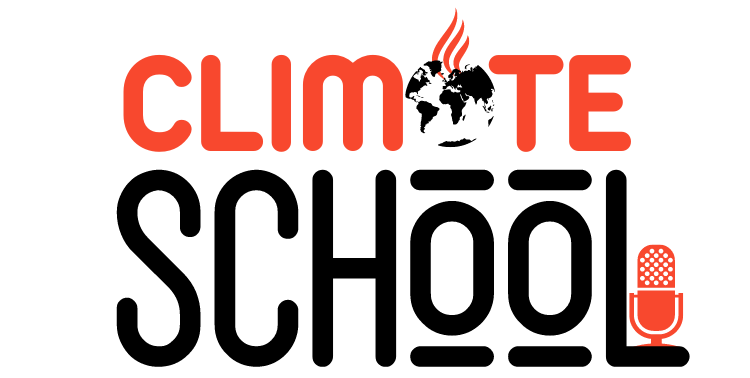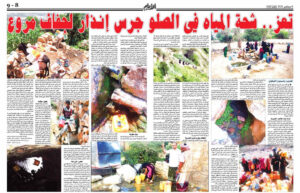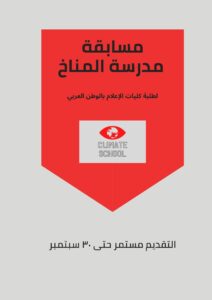Prepared by: Widad Al-Saudi
In this report we provide you with a summary about Drnight Prepared by John Morales, founder of ClimaData and meteorologist in Miami; “To enable the public to learn more about climate change, in a way that people not only understand, but accept, from a trustworthy source.”
Scientific research indicates that human-caused climate change is enhancing the frequency and intensity of extreme weather events, significantly impacting human lives and the environment. This type of phenomenon includes extreme high temperatures, prolonged and frequent droughts, increased speed of hurricanes, and heavy rains.
As these phenomena increase, it becomes necessary to clarify the link between them and climate change, so that the public understands how a warming planet affects their lives. Scientists point out that they are increasingly able to determine the impact of climate change on extreme weather events through attribution science, where they trace the environmental footprint of those phenomena.
For example, studies say the deadly heat wave that hit India in 2022 was 100 times more likely due to climate change. Even in the absence of clear attribution data, scientists agree that climate change is making extreme weather more widespread and dangerous.
Here are some language models that can be used to facilitate communication on this topic:
Scientists agree that climate change is leading to extreme weather events such as today's high temperatures.
Heatwaves like these are now becoming more common and more severe as a result of human-caused climate change.
Human-caused climate change is not solely responsible for extreme weather, but it increases natural weather patterns, like steroids.
In short, studies on the role of human-induced climate change suggest that it has made extreme weather conditions significantly more likely than they would be in a world without carbon pollution. In other words, the results suggest that extreme weather conditions are becoming more frequent due to human-caused climate change impacts.
Examples in the news:
The report includes real-life examples from news stories linking climate and extreme weather events in simple, effective language. Climate Central refers to the non-profit news organization that provides scientific analysis and reporting on climate, providing journalists with the resources and language to cover these issues.
Heat waves:
The examples provided show the impact of climate change on heat waves in different regions of the world such as India, Pakistan and the western United States. Experts confirm that each heat wave is becoming more intense and likely due to climate change, putting life and property at risk.
Drought:
The report examines the impact of climate change on drought in regions such as the southwestern United States and eastern Africa. The data shows that devastating drought can not only be attributed to natural factors, but also to climate change.
Rainfall and floods:
The report shows how climate change is affecting the pattern of precipitation and increasing the risk of flooding in places like Pakistan. The language used suggests that heavy rains and flooding are increasing due to climate change, exposing communities to greater risks.
Sea level rise:
The report highlights the impact of climate change on sea level rise and its impacts on coastal communities. Data shows that humans are contributing significantly to global warming, causing sea water to expand and ice to melt, exposing coastal areas to more flooding.
Impacts on infrastructure:
The report shows how sea level rise is impacting infrastructure, noting that pipes and infrastructure are being repeatedly submerged by rising waters, causing new infrastructure problems and exposing coastal infrastructure to greater risks.
Snow and ice:
The report highlights changes in winters, noting that weather patterns are becoming more erratic and less stable in the era of climate change, leading to changes in the pattern of snowfall and snow distribution across the United States.
Tornadoes:
The report outlines an expected increase in hurricane activity as a result of warming oceans, suggesting that we are likely to see more major hurricanes and tropical storms in the future.
Forest fires:
The report highlights the worsening of wildfires due to climate change, noting the increased frequency and severity of wildfires due to dry and hot conditions, and also pointing to negative impacts on ecosystems and infrastructure.
Reporting tools
Provides many tools and resources for journalists to help them connect climate and extreme weather events.
Climate Central's Climate Transition Index is a valuable tool for analyzing the impact of climate change on local temperatures around the world.
World Weather Attribution provides real-time assessments of extreme weather events, enabling journalists to use this data to explain the relationship between climate change and the frequency and severity of weather events.
CCNow's Extreme Weather Reporting Guide provides practical guidance for journalists in understanding how climate change impacts these phenomena.
SciLine offers helpful guides with ready-to-use facts and pitfalls to avoid.
Through these tools and resources, journalists can draw attention to the importance of climate change in explaining extreme weather events and provide context to audiences.





